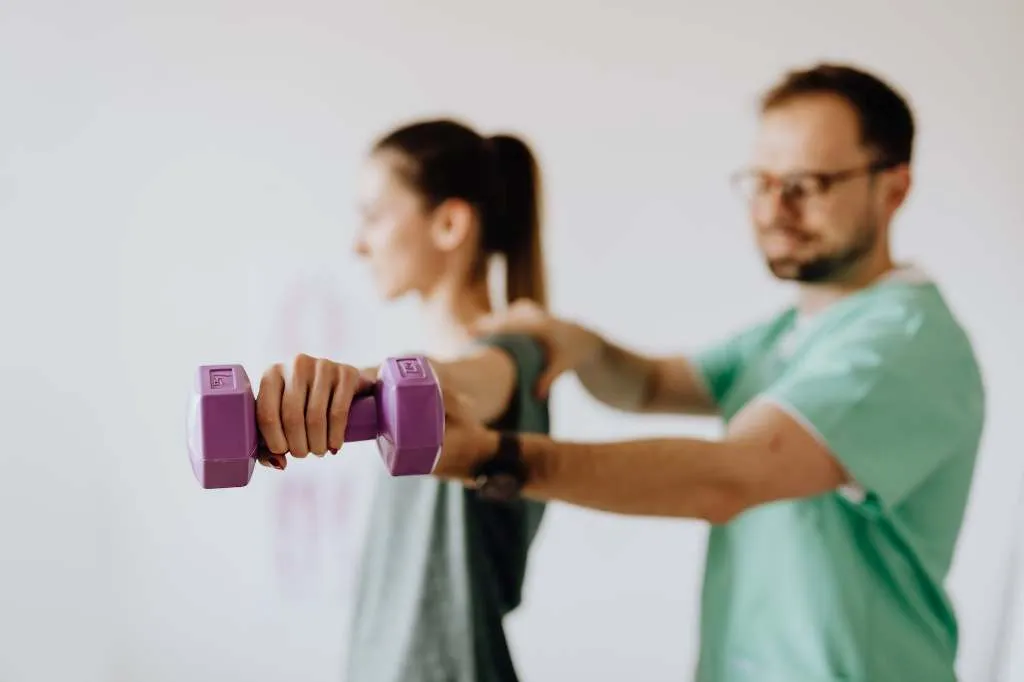
When playing sport, there’s always a risk of injury. In fact, America experiences approximately 8.6 million sports-related injuries each year, according to the Centers for Disease Control and Prevention. The most prevalent injuries come in contact sports, but that doesn’t mean there isn’t a fair of share of injuries that come from people not warming up and cooling down sufficiently.
Once an injury is sustained, rehabilitation is crucial in helping patients regain full functionality. However, the process can be long, painful, and difficult. Some people even find rehabilitation isolating and get disillusioned that others with similar injuries manage to recover faster, pressuring themselves to try to recover quicker.
But taking the time to heal properly is the only way you’re going to be able to can get back on your feet as soon as possible. If you’ve been injured recently, don’t fret. With this comprehensive guide, you won’t feel lost along the way.
When to begin
Regardless of the injury, rehabilitation should start immediately. The more you wait, the more your injuries will limit how much time you’ll need to bounce back. In fact, a 2017 study found that, by starting rehab two days after the injury occurred, instead of 9 days, muscular injuries healed much faster.
Your injury will fall into one of two categories: micro-traumatic or macro- traumatic injuries. Microtraumas, like sprains or swimmer’s shoulder, can usually be treated at home using the RICE technique: rest, ice, compression, and elevation. Macrotraumas like subluxations, on the other hand, need support from licensed professionals.
Mapping out your treatment plan
For microtraumas and macrotraumas where the symptoms persist, it’s very important that you consult a medical professional. Doctors can gauge the severity of your injury, physical therapists can formulate a rehab plan perfectly tailored to your needs, and rehab nurses can help you through the treatment itself.
Because of their expertise, it’s no wonder that rehab professionals are in high demand right now, with more than two billion people globally — both athletes and regular people alike — requiring their services. Fortunately, more schools and universities are offering robust and holistic online healthcare programs, making rehab services more accessible than ever before.
Some online programs only take three years to complete, but produce quality entry-level physical therapists, for instance. Meanwhile, nurses can work for an online post-masters nursing certificate which refines their clinical skills and knowledge for both primary and acute care. They’re even taught psychiatry, equipping them with all the skills needed to become a specialist rehab professional.
Rehab professionals usually recommend a five-stage treatment plan, which is dependent on the actual injury in question.
The five stages of recovery
The five stages of recovery include: protection (and offloading), reconditioning, sport-specific conditioning, return to sport, and injury prevention.
The first stage of the recommended treatment plan is usually the most painful. It lasts up to six days and manifests through inflammation, so protecting and taking the load off the injured area helps lessen the pain. RICE is considered part of this phase.
The next phase, reconditioning, encourages limited protected mobility to promote tissue growth. Light loads, such as putting weight on an injured leg helps with strengthening. The third phase intensifies the reloading process using sport-specific methods or equipment. Both phases can last anywhere between six months to a year depending on the severity of the injury.
By stage four, you can ease back into your sport under strict observation. If the problem area causes pain or weakness, progress is slowed accordingly.
Once you can play without any pain and can exert maximum effort, this is when most practitioners would say that you have fully recovered. However, you have to be proactive and prevent the injury from occurring again. Be more careful during training, and remember to warm up and cool down properly during your workouts.
A holistic approach
It is important to maintain your mental health throughout the process. Feeling pressured to heal or disappointed by your progress can negatively impact your recovery. Try guided imagery, positive self-talk, or consult a sports psychologist. Whatever you do though, remember that all injuries are individualistic, and each recovery is unique. Go easy on yourself. Do what you need to do and come back, stronger and better than ever before.
Author: Alisha Vance


